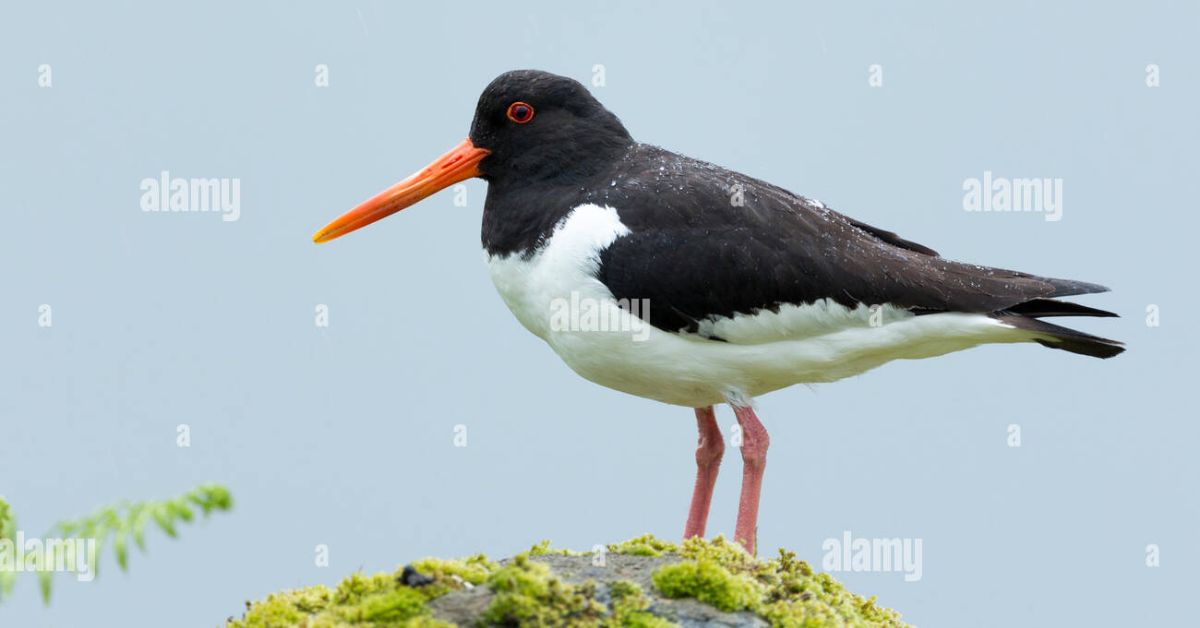Bird with a Orange Beak are known for their striking appearance and vibrant color, which plays a role in their survival. Found in species like toucans and puffins, the orange hue helps with attracting mates and finding food. This color comes from carotenoids in their diet, making their beaks a functional and eye catching trait.
Have you ever spotted a bird with a bright orange beak and wondered what makes it so unique? These birds are not only visually stunning, but their beaks serve crucial roles in their daily lives. The orange color, found in species like puffins and toucans, comes from their diet and helps them survive by attracting mates, finding food and communicating.
Bird with orange beak gray body
Bird with a Orange Beak and gray bodies are often found in diverse environments, from woodlands to coastal areas. Their bright orange beaks provide a sharp contrast to their muted gray feathers, helping them stand out in their habitat. This coloration can serve to attract mates or signal dominance within their species.
Species like the blackbird and the cockatiel commonly display this combination of colors. The orange beak, rich in carotenoids from their diet, plays a vital role in feeding and communication. Meanwhile, their gray body helps them blend into their surroundings, offering a balance of visibility and camouflage.
Feature about bird with a orange beak
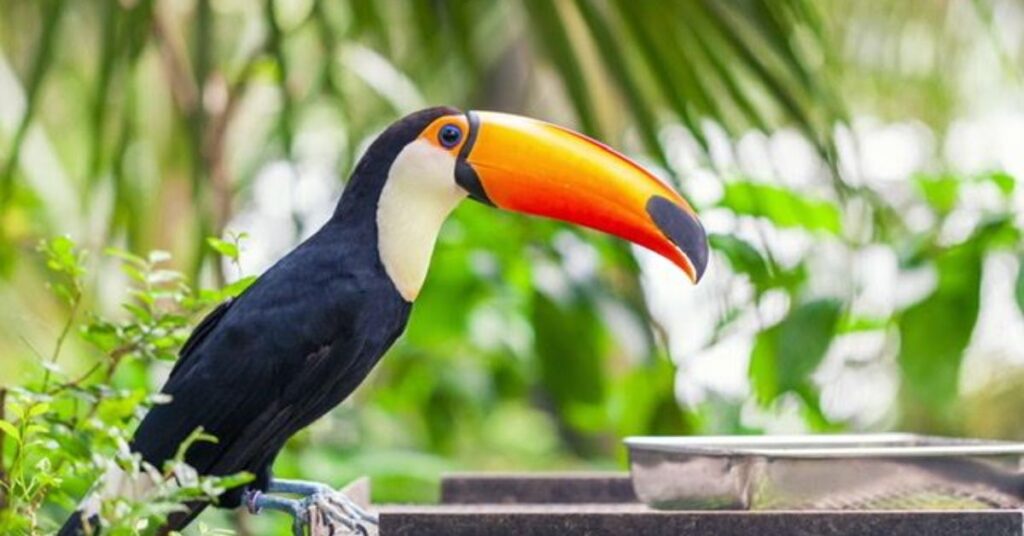
Bright Coloration
The orange beak of some birds is striking and serves as a visual beacon. This vivid color is often due to carotenoids in their diet, which also plays a role in the bird’s attractiveness to potential mates. The beak’s brightness can make the bird more noticeable in its habitat.
Mating Displays
An orange beak can be crucial in mating rituals. In many species, the bright beak acts as a signal of health and vitality, helping birds attract mates during the breeding season. This colorful feature often becomes more pronounced during courtship.
Foraging Aid
The orange beak helps birds in locating food. For example, species like toucans use their bright beaks to pick fruits or insects from branches. The vivid color can also aid in distinguishing ripe food sources from less desirable options.
Species Identification
An orange beak can be a key characteristic for identifying bird species. It provides a unique trait that helps ornithologists and birdwatchers distinguish between different species, such as the puffin and the black-collared starling.
Environmental Adaptation
In some habitats, the orange beak provides both camouflage and visibility. In dense forests or among colorful fruits, the beak’s color can blend with or stand out from the surroundings, assisting in both predation and protection.
Also Read This Blog: Safflower Seeds For Birds
bird with orange beak, and brown body
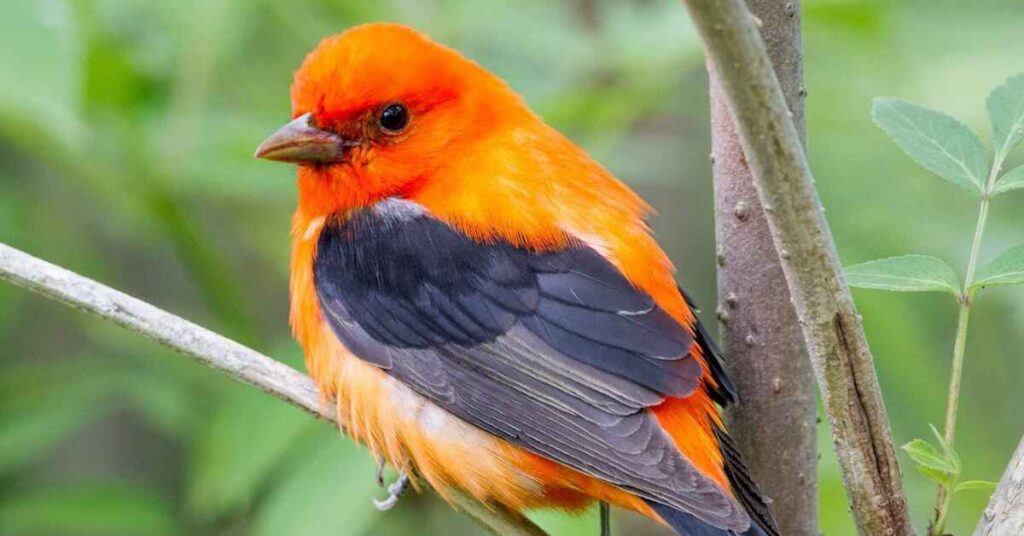
Birds with orange beaks and brown bodies are striking due to their contrasting colors, which can aid in various survival strategies. The vibrant orange beak helps in attracting mates and foraging, standing out against their more subdued brown feathers. This coloration often provides an effective balance between visibility and camouflage.
Species such as the Northern Cardinal and certain types of herons display this color combination. The orange beak, rich in carotenoids, supports their feeding habits by distinguishing ripe fruit or insects. Meanwhile, their brown body helps them blend into their natural environments, offering protection from predators.
Small bird with orange beak
Small birds with orange beaks often capture attention with their vibrant coloration. The bright beak is not only visually striking but also plays a crucial role in feeding and attracting mates. For example, the orange beak can help these birds locate specific types of food, such as nectar or insects, which are vital for their diet.
Species like the American Robin and the goldfinch feature this eye catching trait. Their small size and colorful beaks make them easy to spot in their natural habitats, such as gardens and open woodlands. The orange beak contrasts sharply with their feathers, enhancing their visibility to potential mates and predators.
Black bird with a orange beak
Black birds with orange beaks present a striking contrast, with their dark plumage highlighting the vivid beak color. This combination is not only visually appealing but also functional, as the orange beak helps in foraging and attracting mates. The beak’s brightness can signal health and vitality, making it an important factor in mating rituals.
Species like the Black collared Starling showcase this distinct coloration. Their orange beak aids in identifying ripe fruit and insects against their otherwise dark feathers. This feature enhances their ability to find food and communicate with other birds, making it a vital part of their survival strategy.
White bird with a orange beak
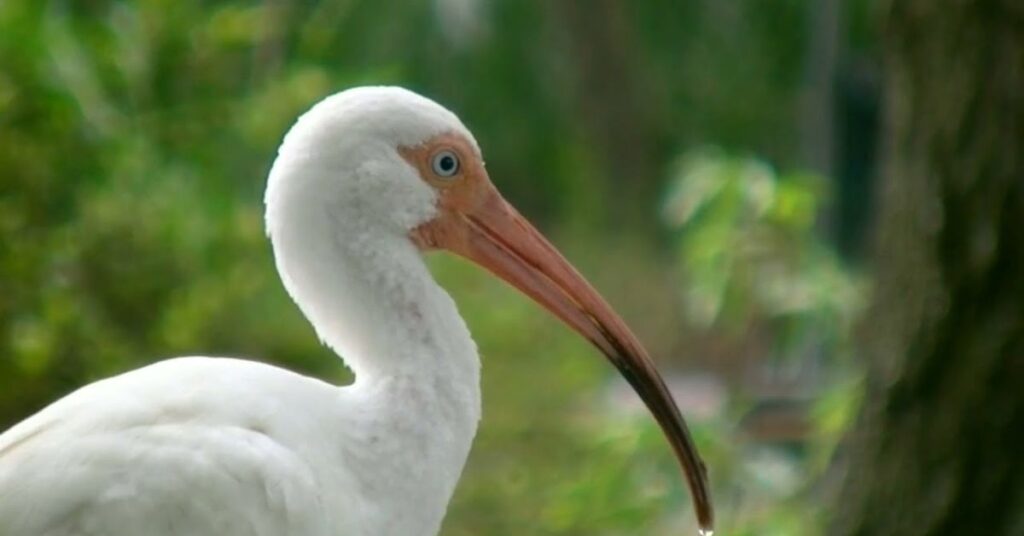
White birds with orange beaks stand out due to their contrasting colors, which can be visually stunning. The orange beak often serves multiple purposes, such as aiding in feeding and attracting mates. This bright coloration helps them locate food sources like fish or insects and can signal their health and vitality to potential mates.
Species such as the Roseate Spoonbill exhibit this unique color combination. The white feathers provide camouflage in their wetland habitats, while the orange beak is used for foraging and communication. This contrast between the beak and body color enhances their ability to interact with their environment effectively.
What is the bird with the orange beak?
The bird with the orange beak can refer to various species, each with unique traits and habitats. For instance, the toucan is renowned for its large, vibrant orange beak that aids in its fruit based diet and social interactions. The striking color of the beak can also serve as a signal during mating rituals or territorial displays.
Another example is the puffin, which sports a bright orange beak during the breeding season. This colorful beak helps puffins in catching fish and attracting mates. The beak’s vivid hue stands out against their black and white plumage, making them easily recognizable in their coastal nesting areas.
What is a brown bird with a long orange beak?
A brown bird with a long orange beak often refers to species like the American Avocet. This bird is distinguished by its unique long, curved orange beak, which is used to sift through water for small invertebrates and insects. Its brown and white plumage contrasts sharply with its vivid beak, aiding in both foraging and attracting attention during mating.
Another example is the Roseate Spoonbill, which, while predominantly pink, can sometimes appear brown due to environmental factors. Its long, orange beak, shaped like a spoon, is effective for filtering food from shallow waters. This specialized beak and coloration help the spoonbill thrive in its wetland habitat.
What all black bird has an orange beak?
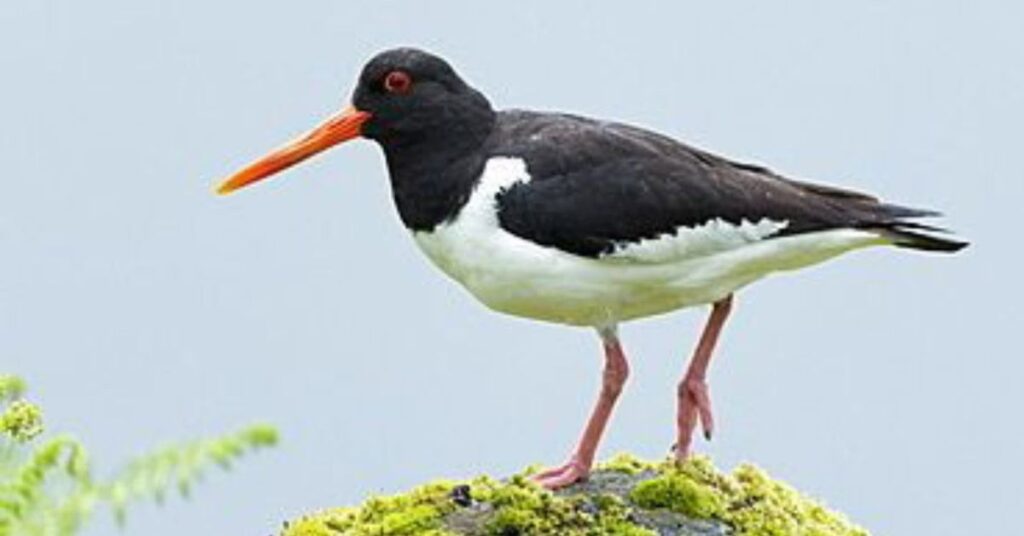
The Black-collared Starling is a notable example of a black bird with an orange beak. Found in Southeast Asia, this bird features a striking orange beak that contrasts with its dark plumage. The bright beak helps in foraging and social interactions, making it easier for the bird to find food and communicate within its flock.
Another black bird with an orange beak is the Indian Starling, or the Indian Myna. Its orange beak, combined with dark feathers and bright yellow eye patches, makes it distinctive. This color combination aids in attracting mates and signals the bird’s health and vitality to others in its species.
What bird looks like a penguin with an orange beak?
The bird that resembles a penguin with an orange beak is the King Penguin. Native to the sub-Antarctic regions, this bird has a black and white body similar to a penguin but features striking orange patches on its beak and around its neck. The vivid orange coloring is used for attracting mates and displays during courtship.
Another example is the Macaroni Penguin, which, while not exactly penguin-like in its body shape, sports a distinctive orange beak and bright yellow feathers on its head. These colorations help it stand out in its Antarctic habitat, playing a role in mating displays and communication within colonies.
What is a red and brown bird with an orange beak?
The Rose-breasted Grosbeak is a red and brown bird with an orange beak. Male Rose-breasted Grosbeaks are known for their striking red chest and brown back, which contrast with their bright orange beak. This colorful beak and plumage are used in mating displays and foraging in wooded areas.
Another example is the Northern Cardinal, which can display a reddish-brown body with a vibrant orange beak, particularly noticeable in males. The beak’s color aids in feeding on seeds and berries, and its brightness helps in attracting mates during the breeding season.
What is a rainbow bird with orange beak?
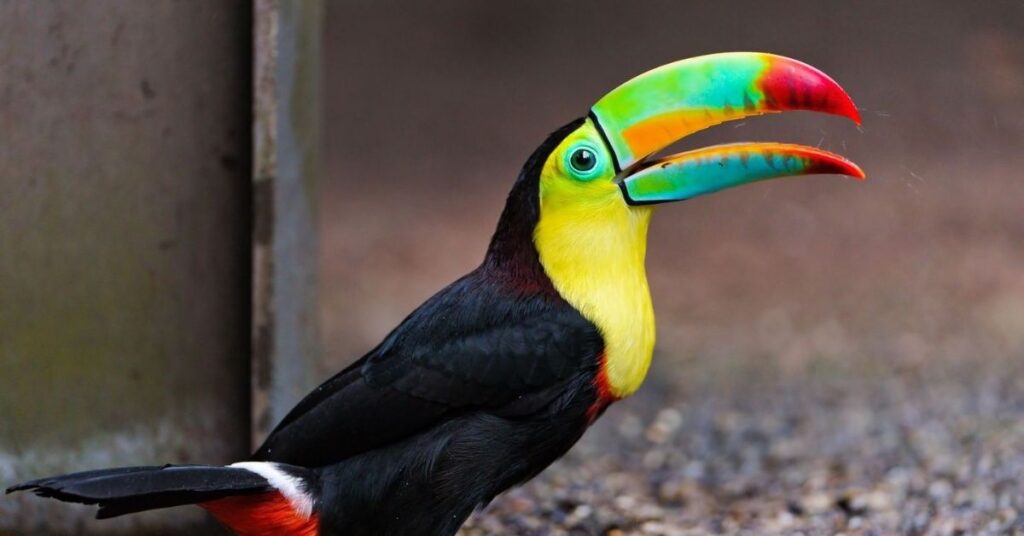
The Rainbow Lorikeet is a colorful bird known for its vibrant plumage and orange beak. Native to Australia, this parrot features a dazzling array of colors including blue, green, yellow and red, with an orange beak that aids in feeding on nectar and fruits. Its bright beak and feathers are used to attract mates and communicate within its social groups.
Another example is the Mandarinfish, though not a bird, is often mistaken for one due to its bright colors and vivid orange beak-like mouth. Found in coral reefs, this fish’s colorful appearance serves as camouflage among the vibrant marine life and helps it in locating food.
Top Birds With Orange Beaks
Toco Toucan
The Toco Toucan is renowned for its enormous, bright orange beak and striking black and white plumage. Native to South America, it uses its large beak to reach and eat a variety of fruits. The beak’s color also plays a role in attracting mates and establishing territory.
Northern Cardinal
The Northern Cardinal is known for its vivid red plumage and distinctive orange beak. Found in North America, the male cardinal’s beak color enhances its striking appearance, aiding in mate attraction and feeding on seeds and berries. The beak’s color contrasts with its dark eye and bright red feathers.
Atlantic Puffin
The Atlantic Puffin sports a colorful orange beak, particularly noticeable during the breeding season. Native to the North Atlantic, its beak is used to catch and carry fish back to its nesting sites. The bright colors help in mate selection and are a key feature during their elaborate courtship displays.
Variable Oystercatcher
The Variable Oystercatcher has a distinctive orange beak, which varies in size and shape among individuals. This bird, found along the coasts of Australia and New Zealand, uses its beak to forage for shellfish and other invertebrates. The beak’s color helps in finding food and signaling to other oystercatchers.
American White Pelican
The American White Pelican features a large orange beak that is essential for its feeding behavior. Found in North America, the beak is used for scooping up fish from water. Its bright orange hue is also a prominent feature during mating displays and helps in communication within flocks.
Black Oystercatcher
The Black Oystercatcher, found along the Pacific coast, has a bright orange beak that contrasts sharply with its dark plumage. The beak is adapted for prying open shellfish and crustaceans. Its color aids in social interactions and foraging, playing a role in the bird’s survival.
Crested Auklet
The Crested Auklet boasts a striking orange beak with a distinctive crest on its head. Native to the North Pacific, the beak is used for feeding on small fish and invertebrates. Its vibrant coloration and unique crest are important for attracting mates during the breeding season.
African Skimmer
The African Skimmer has an orange beak with a distinctive lower mandible that extends beyond the upper mandible. Found in Africa, it skims the water’s surface to catch fish using its unique beak structure. The orange color aids in distinguishing it from other bird species and in courtship displays.
Royal Tern
The Royal Tern features a bright orange beak and black crown, making it easily recognizable. Found in tropical and subtropical regions, it uses its beak to catch fish while diving from the air. The beak’s color helps in mating rituals and distinguishing between individuals.
Grey-headed Gull
The Grey-headed Gull has an orange beak with a grey head, contrasting with its white body. Common in Africa, this gull uses its beak to feed on fish and invertebrates. The beak’s color is crucial for identifying the bird during breeding and feeding activities.
What bird has an orange beak and red eyes?
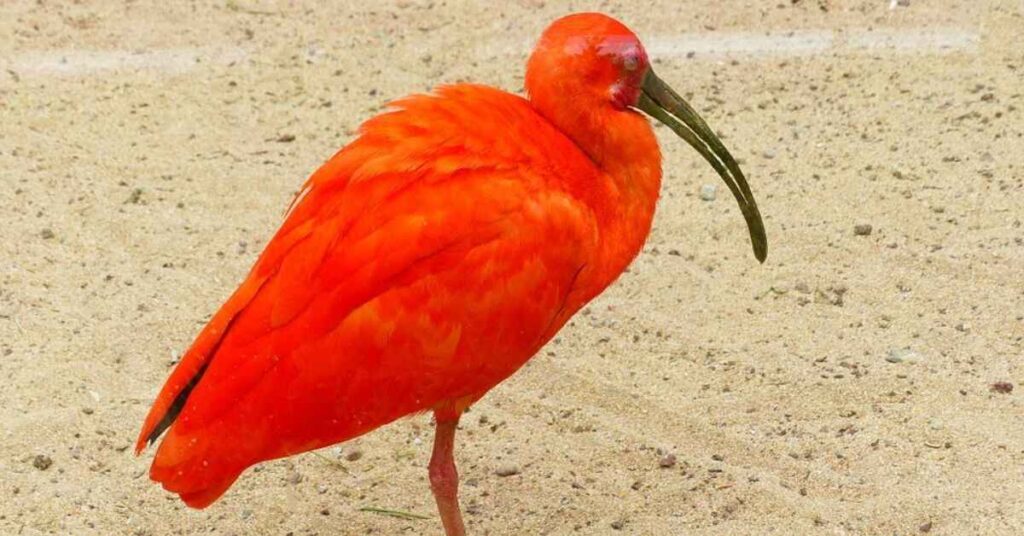
The American Robin is a bird with an orange beak and distinctive red eyes. Commonly found across North America, its bright orange beak helps in foraging for worms and insects. The red eyes add to its striking appearance and are used in social interactions within its species.
Another example is the Scarlet Ibis, which features an orange beak and red eyes. Native to Central and South America, this bird’s vivid colors are a result of its diet rich in carotenoids, which also help it stand out during mating displays and in its wetland habitat.
Do sparrows have orange beaks?
Sparrows generally do not have orange beaks; most species feature beaks that are brown, gray, or black. For example, the House Sparrow has a simple, brownish gray beak that blends with its overall muted coloration, aiding in its foraging habits.
However, some sparrows may have slight orange or yellowish hues depending on their diet and regional variations. Despite these variations, an orange beak is not a common trait among sparrows and is more characteristic of other bird families.
Also Read This Blog: Bird Bath Fountain: Enhance Your Garden’s Serenity
Frequently Asked Question
What are some examples of birds with orange beaks?
Notable examples include the toucan, with its large, vibrant orange beak, and the puffin, which sports a colorful orange beak during the breeding season. These birds use their bright beaks for foraging and attracting mates.
Why do birds have orange beaks?
Orange beaks often result from carotenoids in their diet, which contribute to the bright coloration. This vivid hue helps with mate attraction, signaling health and locating food sources such as fruits and insects.
Are orange beaks found in birds from specific regions?
Orange beaks are found in various bird species across different regions. For example, toucans are native to Central and South America, while puffins are found in the northern Atlantic. The color adaptation helps them thrive in their specific environments.
How does an orange beak affect a bird’s survival?
An orange beak can enhance survival by attracting mates, which is crucial for reproduction. Additionally, the beak’s color can help in identifying food and establishing territory, contributing to overall fitness and survival.
Do the colors of a bird’s beak change over time?
Yes, the color of a bird’s beak can change with age, diet and health. For instance, juvenile birds may have duller beaks that become brighter as they mature and adopt a diet rich in carotenoids, impacting their appearance and behavior.
Summary
Bird with a Orange Beak are visually striking and serve multiple purposes in their lives. Species like the toucan and puffin use their vibrant orange beaks for foraging, attracting mates and communicating. The color typically comes from carotenoids in their diet, which enhance their appearance and function.
These orange beaks are not only eye catching but also play a significant role in the birds’ survival. The bright coloration helps with mate attraction, signaling health and locating food sources. This adaptation varies among species and can change with age, diet, and environmental factors.

Welcom to https://birdsaboutinfo.com. Our content is for general information purposes. While we aim for accuracy, use it at your own risk. Seek professional advice for specific concerns. We’re not responsible for external links or the outcome of using our information. Some content may contain affiliate links. We may update this Disclaimer.
